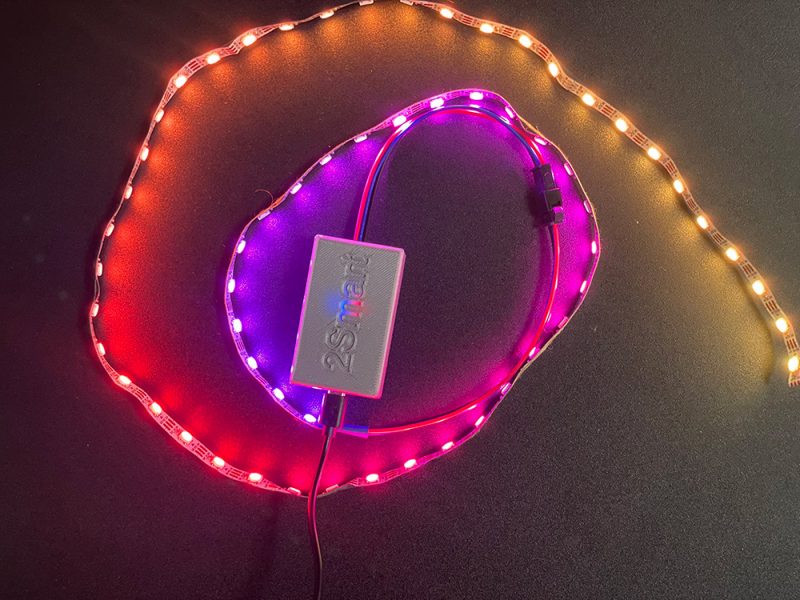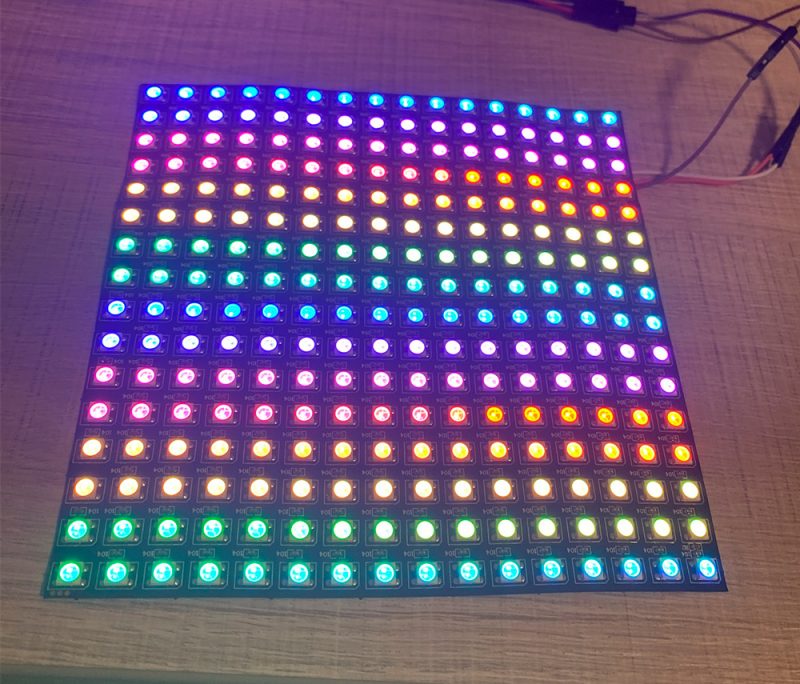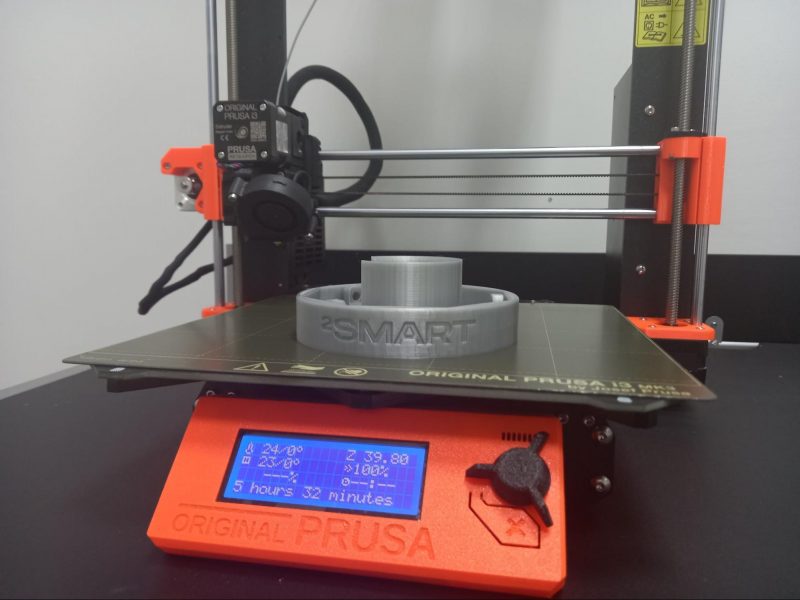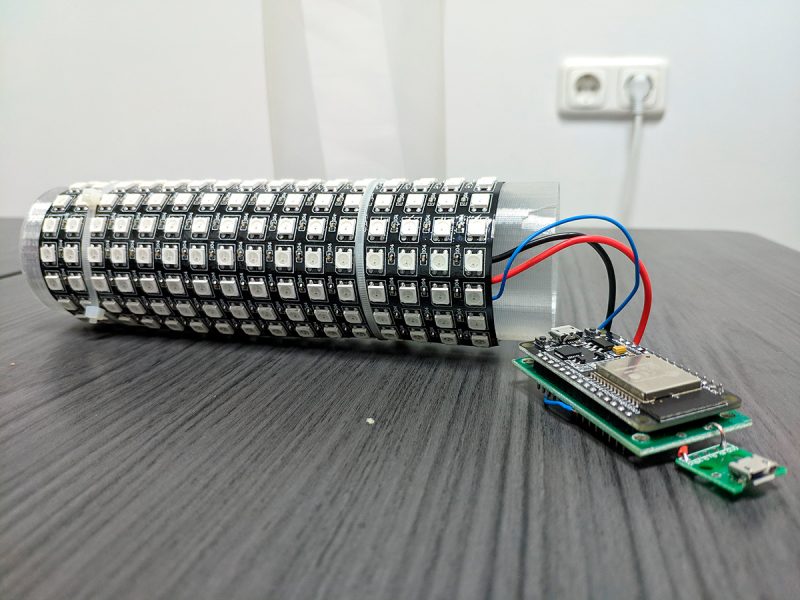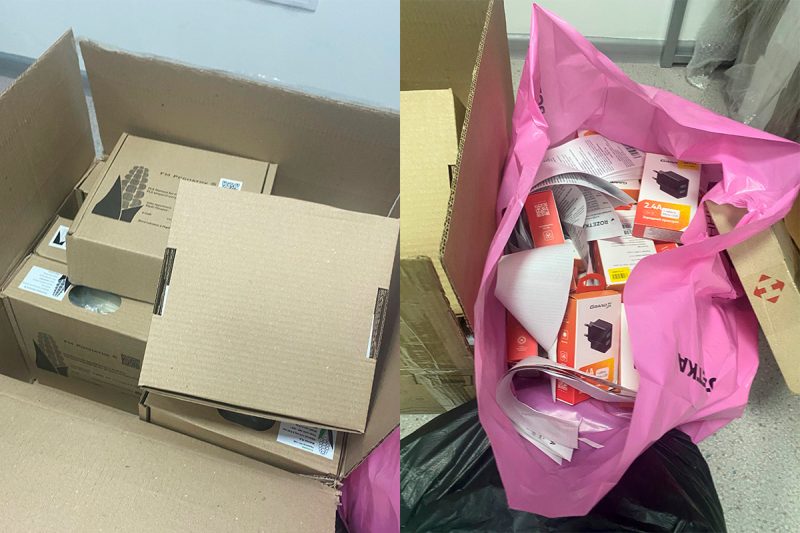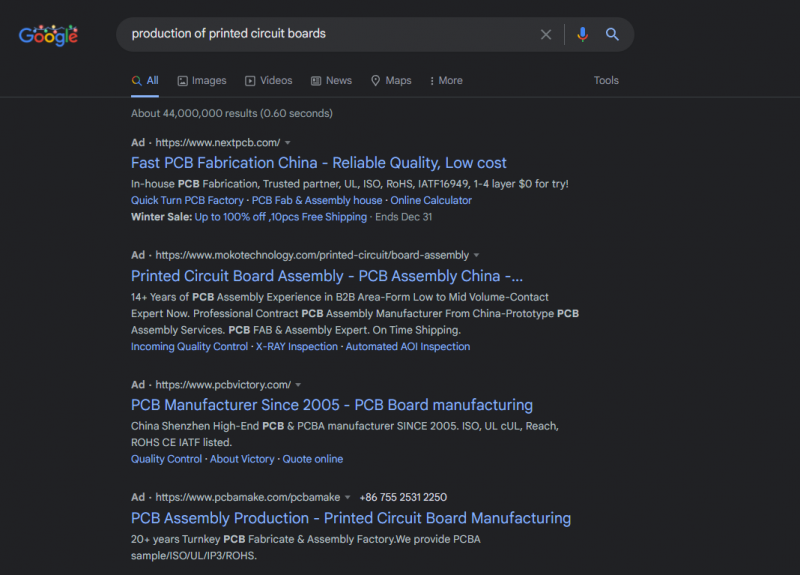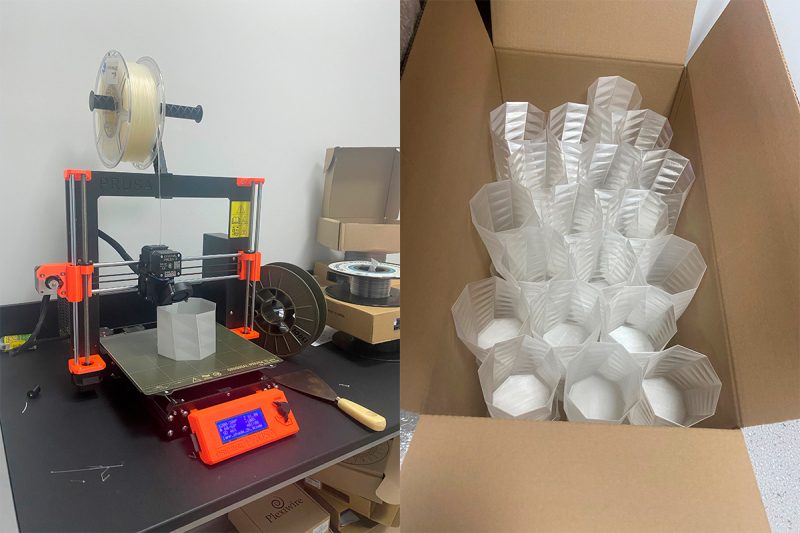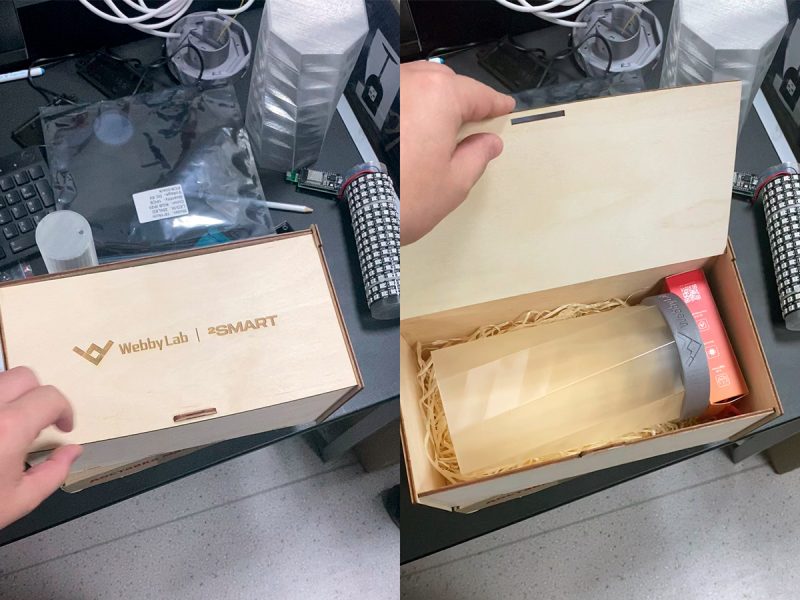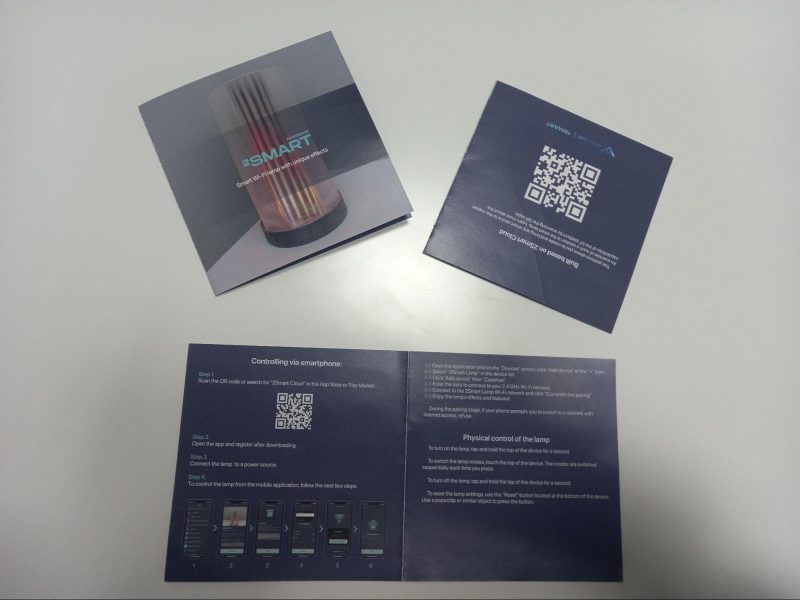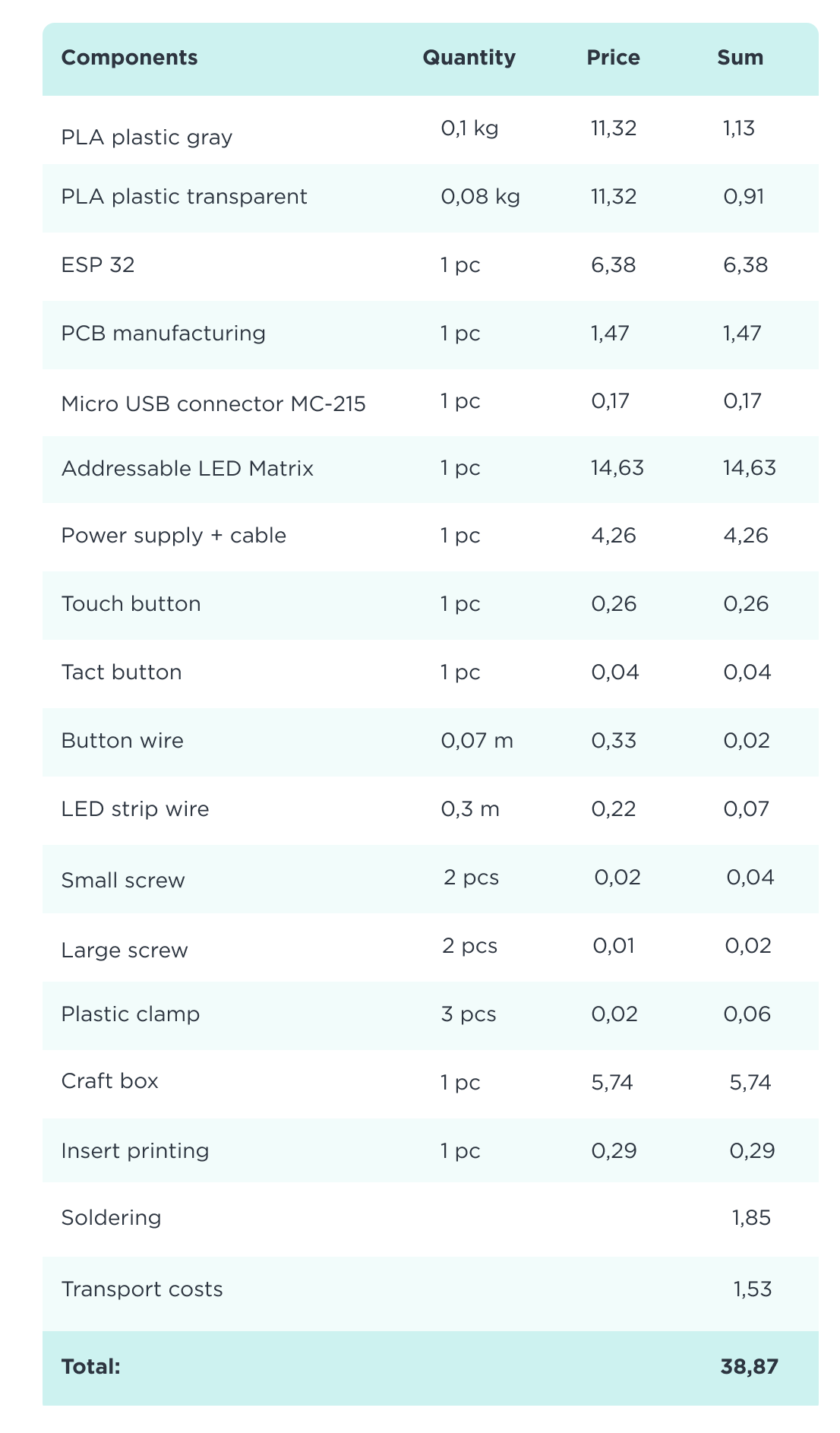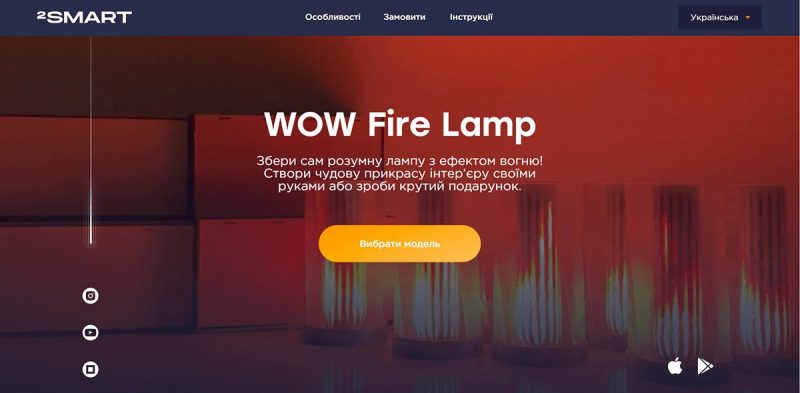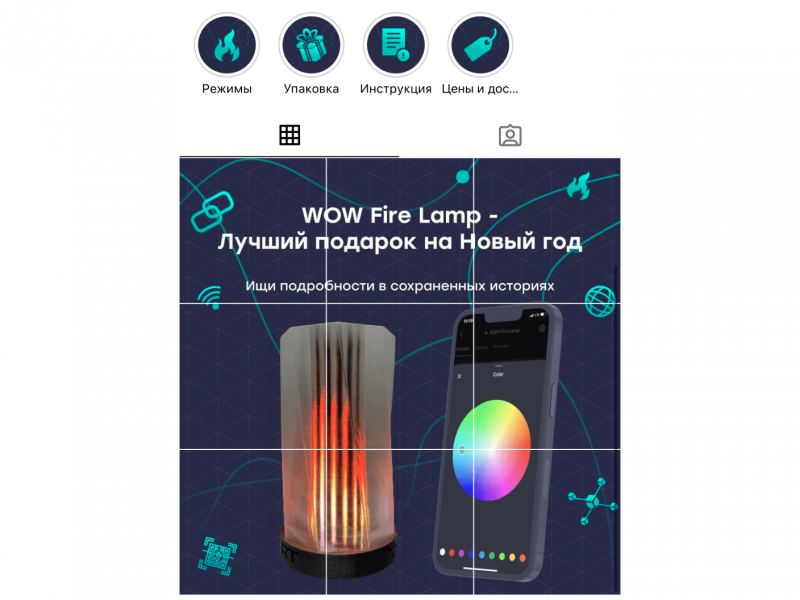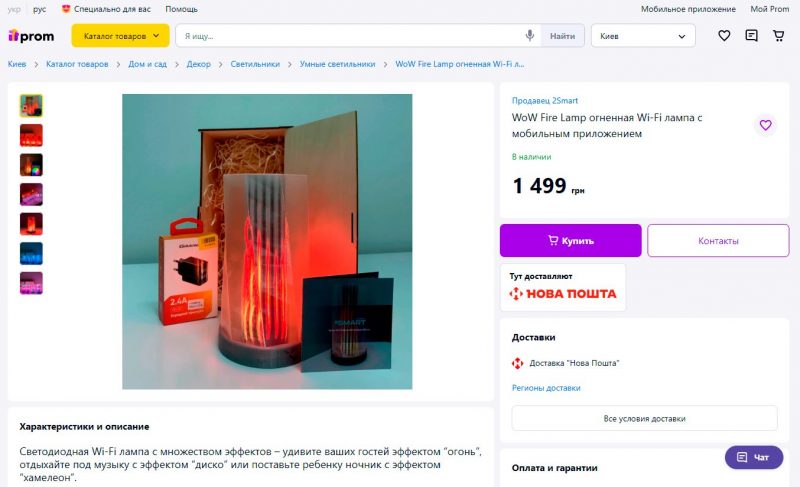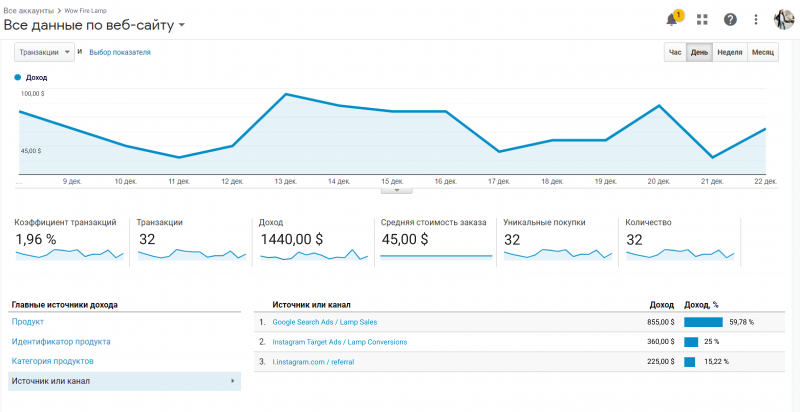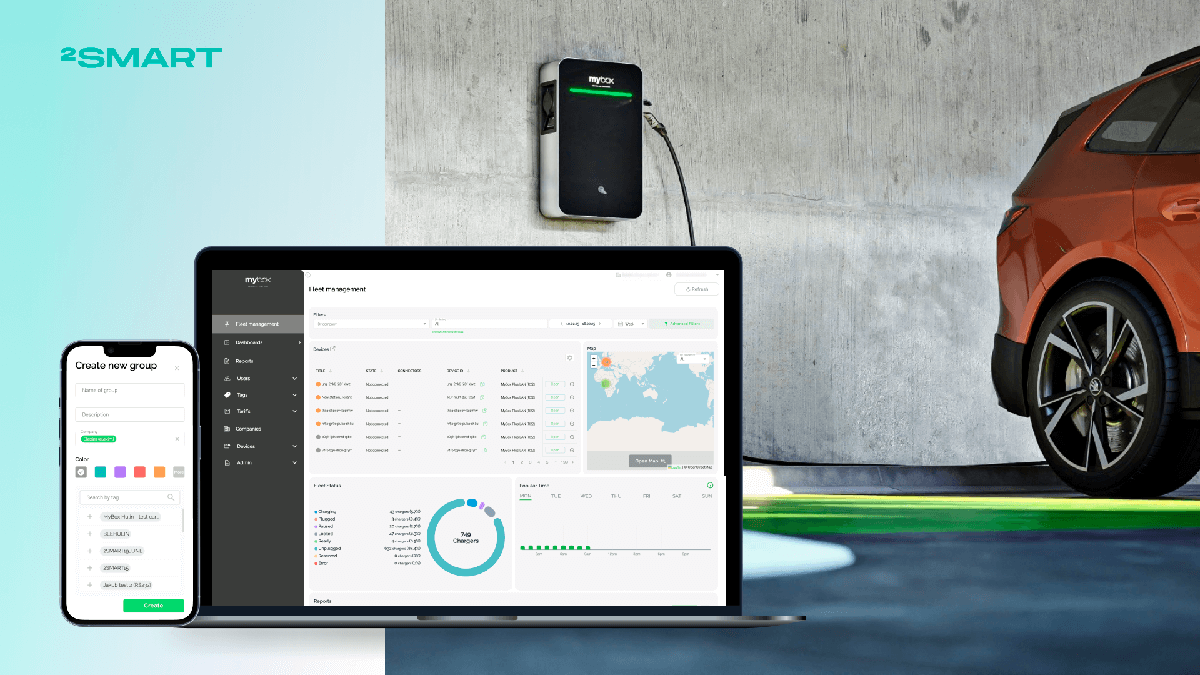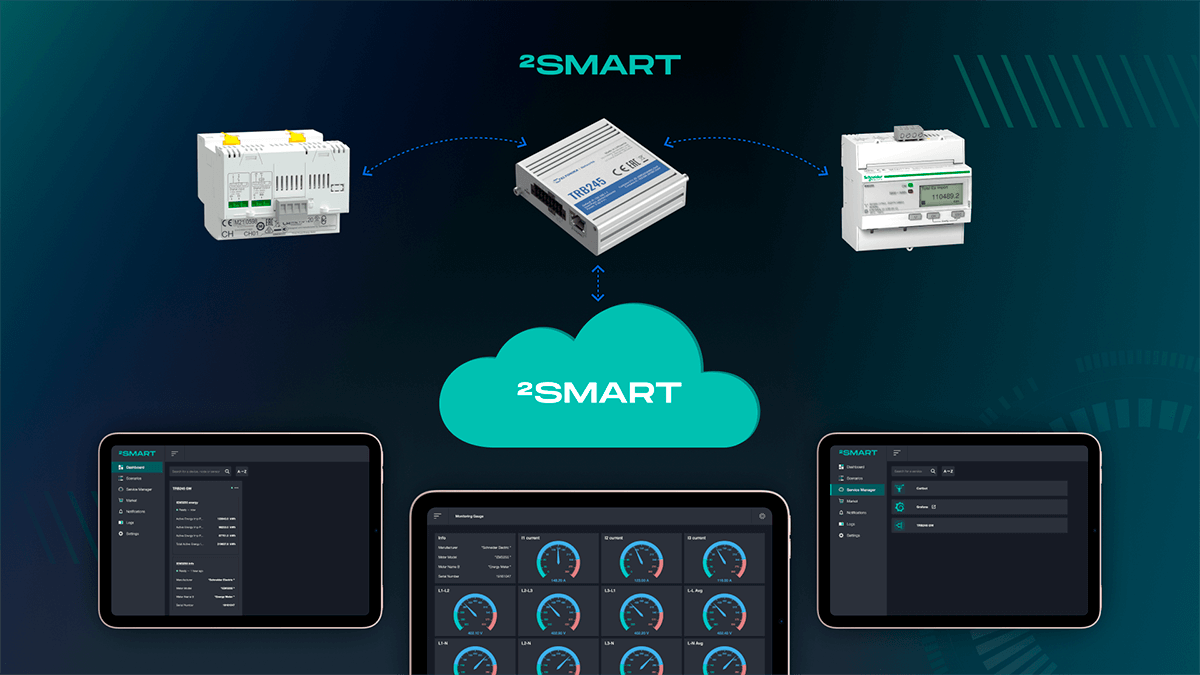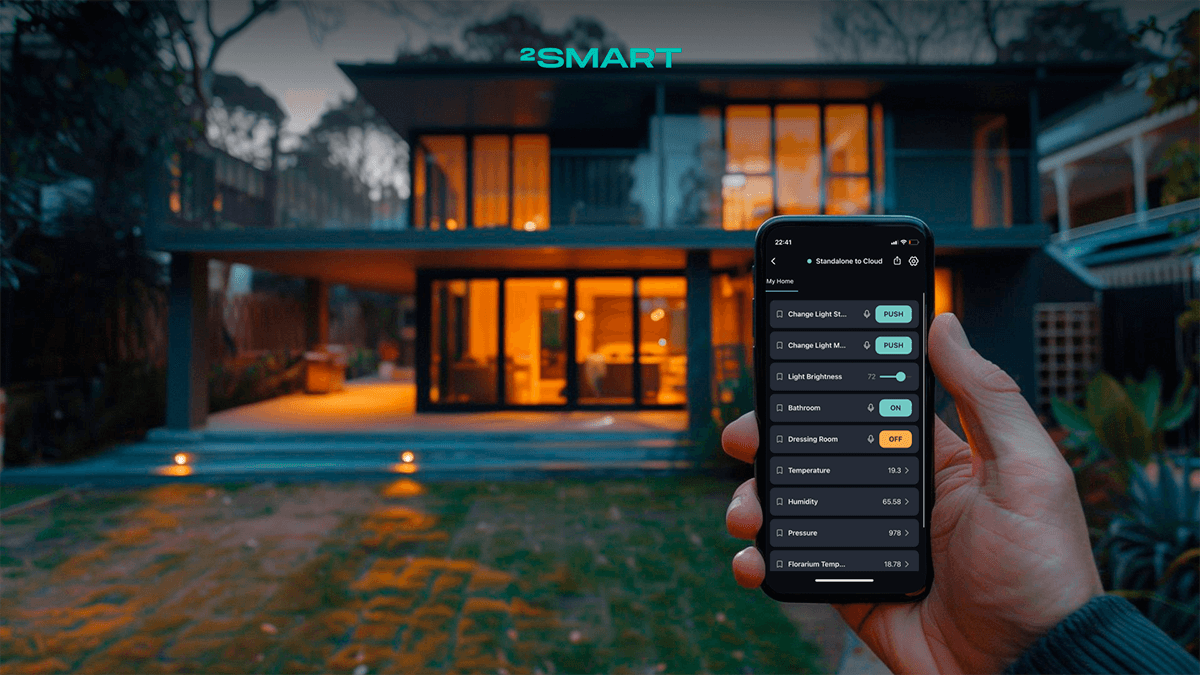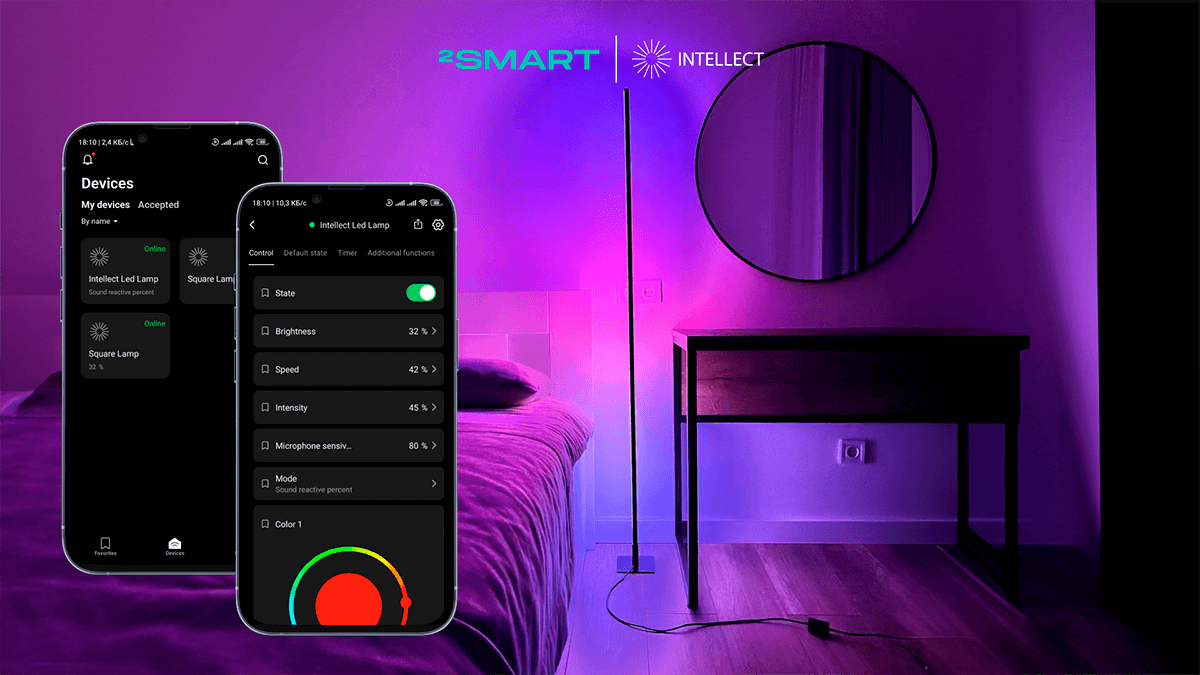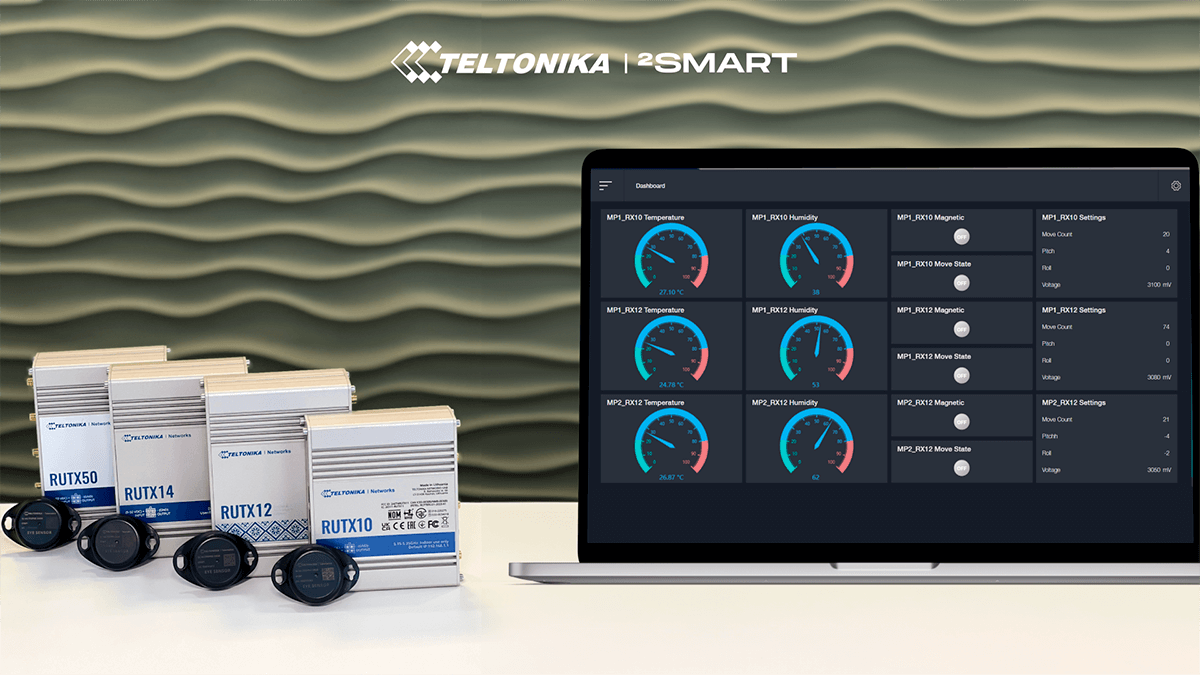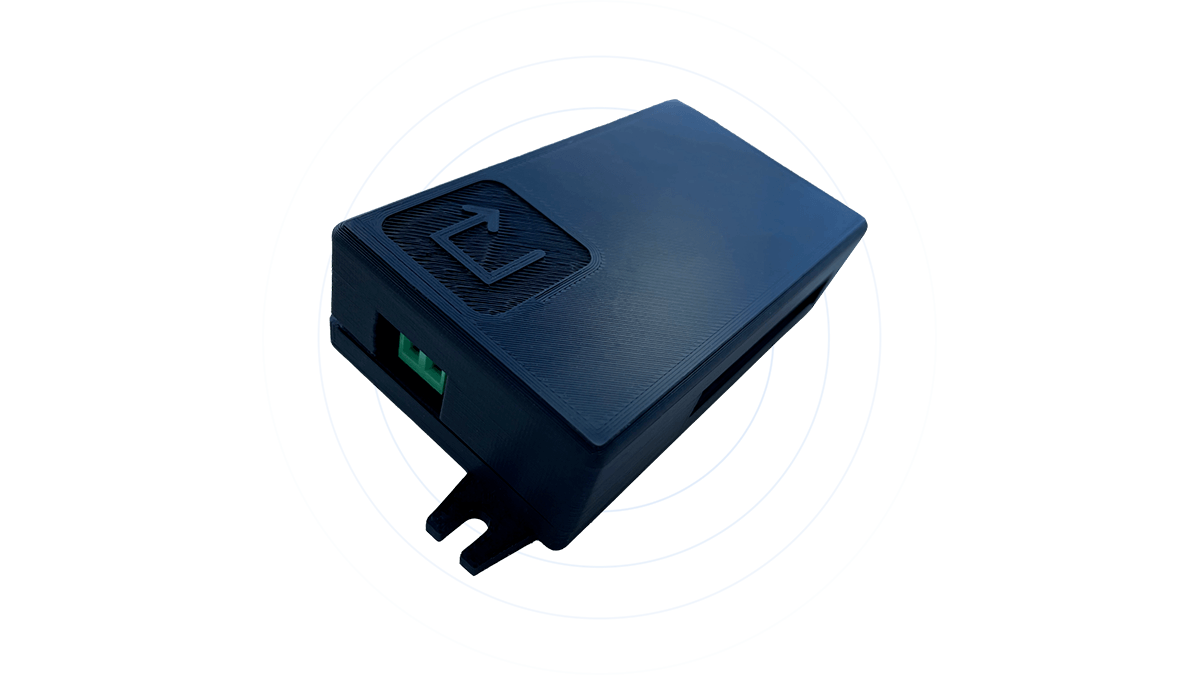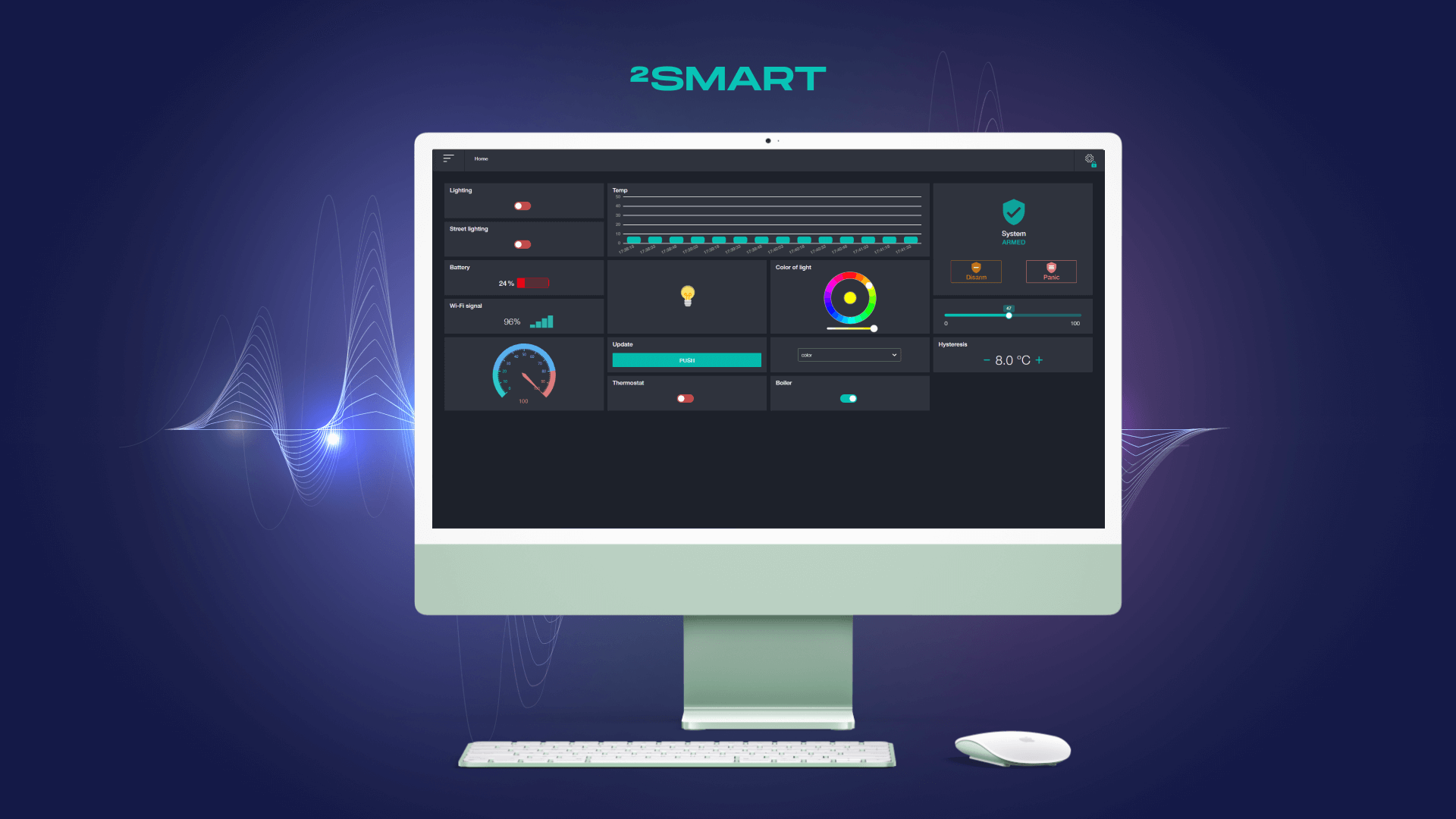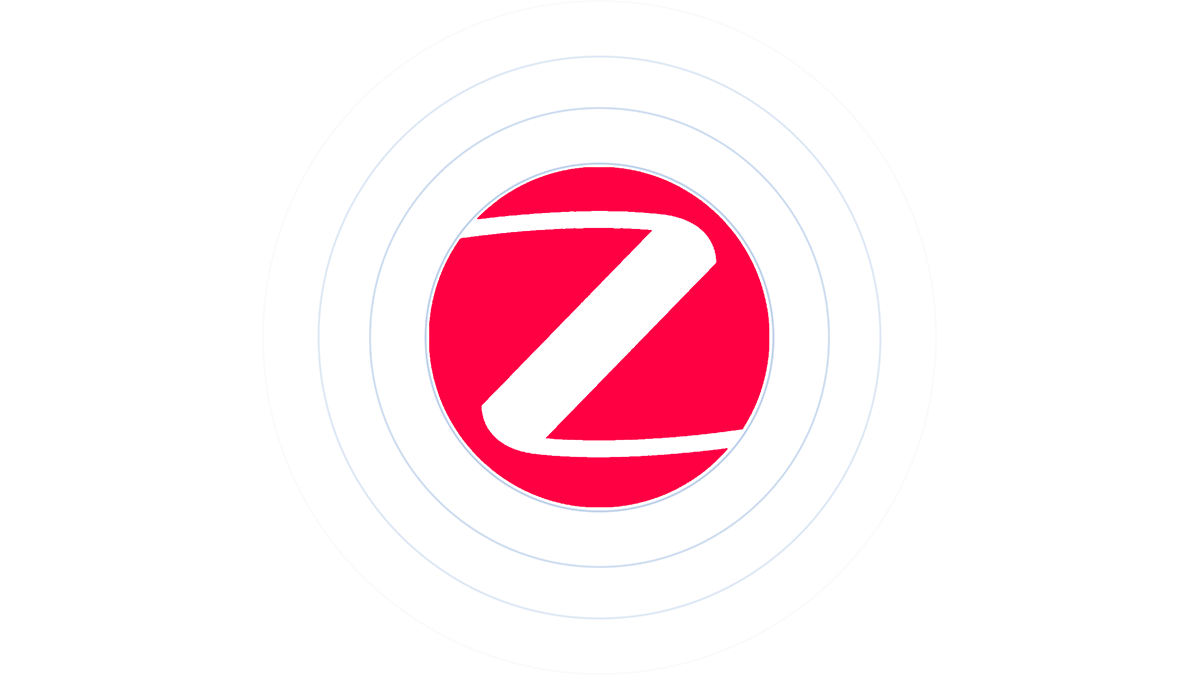Table of contents:
As a part of our IoT platform work, our team periodically creates small projects to test its mechanics: smart relays, sockets, garlands, etc. Some initiatives are so intriguing that they evolve into full-fledged products. We’ve decided to tell you about one of these cases, namely about the automated IoT smart lighting system which you can create by analogy as well. Let’s go through it step by step.
For novice IoT creators: How does IoT smart lighting work?
For those just getting started with discovering the Internet of Things, let us briefly explain how IoT lighting works. The device itself (for example, a lamp) is equipped with a controller, which, in turn, can be managed with the help of an Internet-connected mobile application.
What’s more, we are going to show you how a IoT smart lighting system works by creating a WOW Fire Lamp step by step.
Fire lamp idea: background
So, how was our IoT-based smart lighting system born?
We already had a Wi-Fi controller for addressable LED strips with multiple operating modes, which served as a ready-to-go “smart” garland. The controller allows you to configure settings, change the brightness, and set up the glowing LED color. The garland is connected to a mobile application, which enables remote control from anywhere with an Internet connection.
Here is how IoT and smart lighting make a perfect match. Some simple configurations of an IoT smart lighting system and a mobile app created with the help of our platform for IoT product development are enough to build a home IoT lighting system on your own.
We decided to connect a 16×16 addressable LED matrix brought to the office by one of the team’s engineers to our controller. There were no issues, and all of the basic modes were functioning. We had the option of changing the LED glow color, starting the stroboscope, or using the classic garland mode.
We appreciated the matrix as a fresh experimental field. And we came to believe that something truly remarkable could be delivered.
Nothing new is created but can be improved
We appreciated the matrix as a fresh experimental field. And we came to believe that something truly remarkable could be delivered.
Nothing new is created but can be improved with the internet of things and smart lighting
Of course, the first thing we did was conduct a google search to determine what other people do with such matrices. The Gyver lamp, as well as other variations by other designers, appeared to be near the top of the search results. Quite an intriguing and promising product With several functioning modes, control methods, and case design possibilities. Finally, and maybe most significantly, it all looked cool.
We didn’t hesitate for long and decided to go ahead. Note that the original project uses an ESP8266, but we decided to start with the ESP32, a more contemporary version of MCU. Likewise, we built all our previous devices on its basis.
Additionally, we didn’t have to rush around plumbing supply stores looking for proper lamp pipes and lampshades, as we already had our own 3D printer at the time. We started by downloading an appropriate device body model from Thingiverse and building our prototype.
By the way, if you do not have a 3D printer, we recommend the www.makexyz.com service, which assists you in finding 3D printing locations in your area.
We made no changes to the lamp’s first version except for the switch to ESP32. The device body was likewise printed unchanged, and the die was installed using cable ties, which are our laboratory’s second-most versatile tool, following duct tape.
The outcome exceeded expectations, and the entire team was delighted. It became apparent that the concept was viable. We began experimenting with various operational modes, taking inspiration from the original project’s community members. And then real magic occurred… But stop. It is forbidden to use magic outside of Hogwarts. So simply said, something interesting occurred.
Fire mode: a novel smart lighting IoT feature that stunned everyone
While experimenting with the lamp, our developer Serhiy activated the Fire mode, which was taken from the Alex Gyver community’s set of effects. The mode’s logic has been simplified slightly, as the original version has variability based on the matrix size and its placement angle. We eliminated this detail in favor of a 16×16 matrix.
When the fire mode was activated in conjunction with a transparent shade, the wow impact was massive. And the head of a similar project within the company became so excited that he immediately placed an order for a small batch of 50 devices as Christmas presents for partners.
It quickly became apparent that the device had considerable commercial potential. Besides this, we can provide the following benefits over solutions available on the Internet or those manually constructed by enthusiasts: a mobile application with a modern design, not one from the early 2010s, extra control methods (voice commands, phone calls, Telegram bot), and shared lamp control. This is all part of the advantages of IoT platforms, conceived for testing. We realized that the device had market potential and considered expanding a do-it-yourself (DIY) project to a commercial product.
Required improvements of a smart lighting system using IoT
We’ve noticed that the following improvements can be introduced after receiving an order for the first small batch of lamps:
- creating a small PCB and providing a place for its concealed installation within the device body;
- adding a touch button to operate the lamp — a convenient alternative to a mobile application;
- ensuring that the Reset button is located on the board beneath the technical hole in the body;
- enhancing the appearance of the body with 2Smart logos;
- selecting a power supply unit for a full set;
- choosing the best packaging;
- adding an instruction sheet to the kit.
We believe to have considered every aspect of the hardware and packaging, but the software will almost certainly be refined further. Certain firmware bugs may reveal themselves as new modes appear in the mobile application. And this is where our platform’s update feature comes in useful, as it will be enough to upload a file containing the new firmware to the server, and all connected lamps will be updated over the air.
IoT smart lighting solutions production
We initiated many processes concurrently, as time was running out and the first 50 lamps were to be ready by the beginning of December:
- Purchased components from local retailers (there was no time to wait for delivery from AliExpress, although prices are lower there).
- Searched for contractors to assist us with the quick production of printed circuit boards and device assembly. Everything was simple here: we conducted a Google search, made phone calls, and compared prices. You can contact https://jlcpcb.com/ or similar services if you are not limited in time.
- Used the capabilities of the 3D printer to the maximum for the device body production.
- Ordered craft wooden boxes with our logo.
- Ordered inserts from the printing house.
In our case, one lamp costs $39. And here are several nuances to consider:
- Components were purchased from standard online stores in Ukraine, but ordering on AliExpress would save some money.
- The device body was printed on our own 3D printer, with only a small depreciation of the equipment and material costs included in the costs, but ordering printing on the side will increase the cost of the body.
- The cost includes the manufacture of the box and the insert printing, which is an additional $6 in the price of each lamp.
Here is a comprehensive list of expenses:
The price of a final product, a lamp, on the market starts at $65, and this price does not include a gift craft box. Even focusing on this minimum, we will get good profitability if we launch commercial production of such lamps. At the same time, our version of the device will have such competitive advantages as a more advanced microcontroller, firmware upgradeable over the air, and a modern mobile application.
LED Lighting Smart IoT Solutions Sales launch
Step One: Naming
An interesting point is how to name the device to grab attention.
On the one hand, we wanted to leverage our site’s name, 2Smart, to get more people to know about it. On the other hand, our brand does not sell itself yet.
The lamp created a wow impression in the team’s eyes, and as a result, we decided to call it the WOW Fire Lamp.
Step Two: Selecting tools
The current Internet offers several options for promoting products and each has its own set of advantages and disadvantages. As it would take too long to discuss all, we will just share our personal experience and highlight channels we picked and why. Let’s take a look at them:
Landing page, a one-page website
Pros:
- maximum flexibility,
- extensive analytics capabilities
Cons:
- complexity.
One of the primary benefits of developing your own website is the ability to incorporate any functionality or design. Additionally, Google Analytics tools tackle the issue of user behavior analytics thoroughly. Also, by connecting this service to your Google Ads account, you can train advertising algorithms to provide the necessary traffic to the landing page via paid ads.
The drawbacks are associated with the advantages, as developing a high-quality landing page demands a certain set of skills. At the very least, you should be able to work with or develop website builders yourself, as well as have a fundamental grasp of web design.
Instagram page
Pros:
- simple launch,
- comprehensible content formats,
- a wealth of information provided on how to use the site.
Cons:
- limited analytics capabilities,
- inconvenient moderation.
Instagram is an excellent platform for e-commerce. There are well-established content formats, sizes, and creative criteria that have existed for a long time. You can use pre-designed PSD templates to create posts for the feed, and stories can even be shot in live format on your phone. No programmers or layout designers are required; all that is needed is a basic comprehension of the site. Fortunately, the network has a wealth of advice about using Instagram effectively.
The site’s primary drawback is a lack of sensible user activity analytics. If the site is connected to Google Analytics and has a firm grasp on user activity, Instagram will have to make do with basic engagement metrics like likes, comments, and Direct messages.
By the way, sales through Instagram Direct is a very contentious sales technique. Yes, the opportunity to communicate with the vendor and place orders inside the application enhances conversion. Users can place an order immediately in the chat and continue reading through the feed while doing so. However, communication in the Direct is highly cumbersome for the seller: messages are frequently lost, there are no filters, and keeping track of all correspondence takes a significant amount of time.
Marketplaces: Aliexpress and others
Pros:
- everything you need in one place.
Cons:
- inability to go beyond the basic functionality,
- commission from each sale.
One of the simplest and most effective tools is product placement on marketplaces. The main advantage is that all the necessary tools for organizing sales are usually already collected within the site: built-in channels for working with orders, feedback, integrated payment gateways, and CRM systems.
A less obvious benefit is the trust of potential buyers. Choosing between an unfamiliar website and a familiar marketplace, a person will most likely choose something he/she has already dealt with.
One of the marketplace drawbacks is no flexibility. Marketplace offers a fixed set of tools and formats that you have to work with. All the creativity here is limited to a bright photo and a flashy headline.
The second key disadvantage of the marketplace is the commission since there is a fee for using the site’s tools. You get a ready-made toolkit and save time, however, you have to pay a certain percentage of each sale for this.
Step Three: Launching sales
We have selected the tools, created the Instagram profile, and added items to the marketplaces after laying up the site. But it was still necessary to expose all of this beauty to potential customers, which necessitated promotion and proper positioning.
We decided to sell the lamp in its disassembled condition as a DIY project. This would give consumers a unique sensation since people value what they have done with their own hands more. This also would save us a lot of time during assembly and lower the final cost.
We used two types of ads to generate visitors to the landing page and marketplace: search ads and targeted Instagram ads.
To not go into great depth about advertising settings because there is enough information available on the subject on the Internet. Let’s go right to the point.
Google Ads + landing page Results:
- $94 spent on advertising. The average CPC was $ 0.25.
- 384 visitors attracted to the site and 19 lamps of $45 sold.
- The cost per sale was $4.94.
Google Ads + Marketplace Results:
- $ 51 spent on advertising. The average CPC was $0.30.
- 170 visitors attracted to the marketplace and 5 lamps of $45 sold.
- The cost per sale is $10.2.
Instagram Targeted Ads Results:
- $75 spent on advertising. The average CPC was $0.06.
- 1,250 visitors attracted and sold 13 lamps of $ 45 sold.
- The cost per sale was $ 5.76.
The Bottom Line
Our experience, as described in this case, can serve as a ready-made manual for developing a commercial IoT product at home, from concept to launching sales and gaining results.
Apart from the 50 lamps we provided as presents for partners, we sold 37 devices ourselves (not even devices, but assembly kits). A commercial batch’s prime cost was $1244, while promotional charges added another $220. This totals $1464.
The income gained on the sale of this batch was $1665. As a result, the net income was calculated to be $201.
This is our first time doing something like this. Lamps can be made more affordable by ordering components in bulk on AliExpress. Additionally, scale allows for cost savings in advertising.
After optimizing the landing page for search engines, we will generate organic free traffic, which will help improve efficiency. In a nutshell, such a microbusiness is unquestionably viable!
If you’ve read the entire case, you’re probably interested in the concept of making additional money via smart devices. It’s quite simple to start your own business selling IoT devices: just register on our site and take the first step toward this fascinating effort!
FAQ
- What is smart lighting in IoT?
Smart lighting or internet of things smart lighting is the system that allows for controlling the light, its brightness, and other parameters with the tools of remote control, for instance, with the help of a mobile app. Smart home IoT lighting solutions usually come with advanced features, aimed at optimizing energy costs, providing as much light as is necessary during a certain period of the day, and avoiding extra electricity consumption.
- How do smart lights work?
Smart lights are equipped with a controller that allows for changing the settings and configurations using a mobile app. Also, an IoT smart lighting system for the home can be equipped with sensors, making the light turn on in response to the movement.
- Which sensor is used in smart lighting?
Usually, home IoT lighting solutions come with movement sensors. More advanced Wi-Fi IoT lighting systems may also have ambient, voice, and temperature sensors.
Don't forget to share this post!
Read Next
Let’s dive into your case
Share with us your business idea and expectations about the software or additional services.

